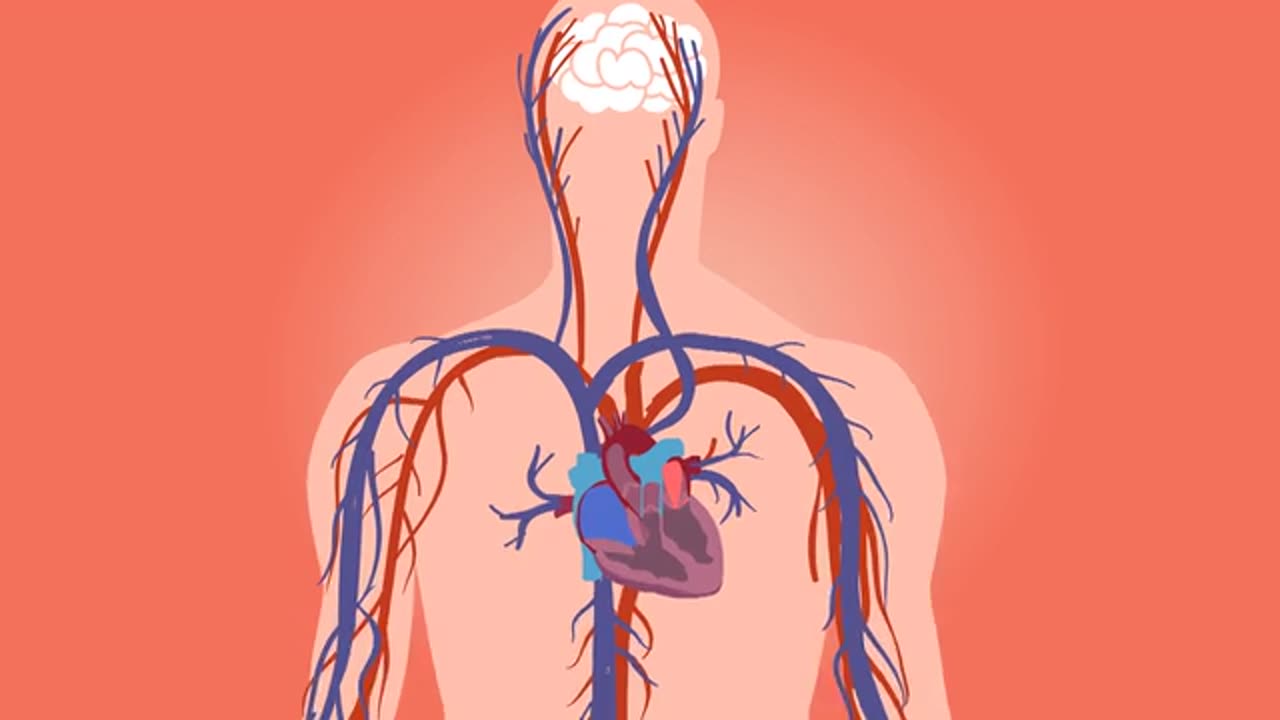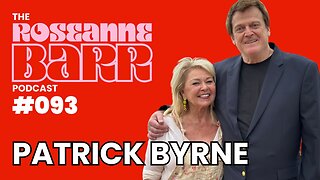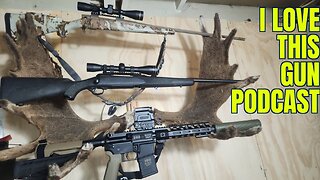Premium Only Content

The heart is a muscular organ in most animals. This organ pumps blood through the blood vessels of the circulatory system.[1] The pumped blood carries oxygen and nutrients to the body, while carrying metabolic waste such as carbon dioxide to the lungs.[2] In humans, the heart is approximately the size of a closed fist and is located between the lungs, in the middle compartment of the chest, called the mediastinum.[3]
In humans, other mammals, and birds, the heart is divided into four chambers: upper left and right atria and lower left and right ventricles.[4][5] Commonly the right atrium and ventricle are referred together as the right heart and their left counterparts as the left heart.[6] Fish, in contrast, have two chambers, an atrium and a ventricle, while most reptiles have three chambers.[5] In a healthy heart blood flows one way through the heart due to heart valves, which prevent backflow.[3] The heart is enclosed in a protective sac, the pericardium, which also contains a small amount of fluid. The wall of the heart is made up of three layers: epicardium, myocardium, and endocardium.[7] In all vertebrates the heart has an asymmetric orientation, almost always on the left side. According to one theory this is caused by a developmental axial twist in the early embryo.[8][9]
-
 2:57:33
2:57:33
TimcastIRL
4 hours agoTrump Tariffs Spark Global PANIC, Countries BEG Trump, CAVE To His Demands | Timcast IRL
185K152 -
 1:37:16
1:37:16
Roseanne Barr
6 hours ago $23.41 earnedThe Man Who Saved America | The Roseanne Barr Podcast #93
74.7K44 -
 10:49:37
10:49:37
Dr Disrespect
13 hours ago🔴LIVE - DR DISRESPECT - WARZONE - OG VERDANSK
210K29 -
 16:38
16:38
T-SPLY
9 hours agoDemocrats Are At President Trump For "Liberation Day"
18.6K20 -
 2:53:20
2:53:20
vivafrei
9 hours agoModerating Debate on Syria - Roy Gutman vs. Scott Horton - Regime Change Good or Bad?
162K12 -
 1:04:37
1:04:37
Man in America
9 hours agoCHEMTRAIL WARFARE: Tom Renz Exposes the Military’s SECRET Chemical Attacks on Americans
29.2K22 -
 2:09:33
2:09:33
Precision Rifle Network
1 day agoS4E11 Guns & Grub Live - That's NOT How Any Of This Works
19.5K3 -
 59:19
59:19
AlaskanBallistics
13 hours ago $0.36 earnedI Love this Gun PodCast # 24
13.6K -
 1:40:29
1:40:29
Slightly Offensive
5 hours ago $5.68 earnedWhite Boy MURDERED: What is the REAL REASON Behind BLACK VIOLENCE? | Nightly Offensive
27.7K12 -
![[PT-ENG] Shitzone, we are BACK! Sem armas, sem aim, sem nada!](https://1a-1791.com/video/fww1/64/s8/1/9/c/6/y/9c6yy.0kob-small-PT-ENG-Shitzone-we-are-BACK.jpg) 3:48:39
3:48:39
Farukzzz
6 hours ago[PT-ENG] Shitzone, we are BACK! Sem armas, sem aim, sem nada!
13.3K